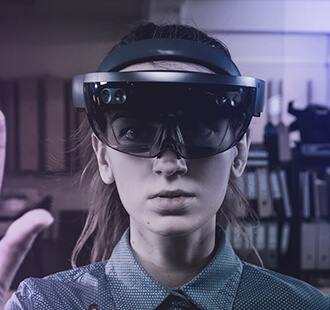
Have you heard of the “New Resignation,” or “Big Quit?” Well, it’s happening now. According to the Bureau of Labor Statistics, approximately 4.4 million people walked away from their jobs in September.
COVID-19 gave people time to rethink what they want in life, to test what works for them, and even to change careers. One of the main reasons is because they are in search of flexibility. The days where it was normal to work 40+ hours in the office are disappearing. Now, 63% of college-educated employees are working remotely. This trend also gives companies, especially CPGs, a chance to integrate work methods based on diverse thinking, insightful strategies, collaboration, and flexibility.
These recent changes have driven the need for companies to provide a flexible, hybrid alternative, and to offer a more enriching environment and support system. Companies are being pushed toward valuing more than just the work. Bill Beck, CMO of health insurance company Anthem, redesigned a creative platform that reminded people of the importance of being together since face-to-face collaboration is a critical part of the creative process. His team came together to think through the execution of the forum as a turning point in the project’s development, where markets work towards a common goal to unlock creative potential.
The new hiring
As data is becoming the central pillar of customer strategy, marketers are demanding more analytical profiles that take the data available and turn it into opportunities to deliver brand messages at the right moment in a user’s life.
Data even helps brands to push their purpose forward. Data scientists show marketers that they too can be a source of creativity because they can create connections between the vast amount of data available, and create a solution that will work for users and brands.
This change of behavior does not mean that creatives are no longer needed. In fact, CPGs are creating collaborative models where different talents, from technical to analytical, come together for creative and strategic purposes. CPGs know and value what each talent can bring to the table working together and creating solutions for the greater good of their brands.
More platforms, more partners
The adoption of digital platforms, the surge of e-commerce, and the latest consumer trends are encouraging companies to lean on a vast network of cost-efficient talent and providers. Companies are also looking for innovative solutions and fresher ideas using contests and crowdsourcing, which help marketers and C-suites reach their commercial objectives.
A global and agile hub
It can be challenging and frustrating to find the proper talent structure, especially if a company is not fulfilling its commercial objectives. Instead of redesigning an entire organization, CPGs are going smaller, First, they work to understand what is happening inside the customer journey. Then, flaws are identified, which reveal opportunities in each touchpoint. Finally, they make suitable acquisitions and find the right partner who will work toward fulfilling an objective.
Marketers are also working to increase coherence across markets. One example is setting up a global design hub that allows different needs to share[A1], upload, and download the same design elements and assets required. This ensures that the brand has consistency in the same communication and goals.
Discover more strategies and what CPGs are doing to win 2022 in our latest white paper, where we share our expertise from working with our CPG clients for more than 18 years. Put your brand on top of its game. Download it for free here: https://121corp.com/white-paper







